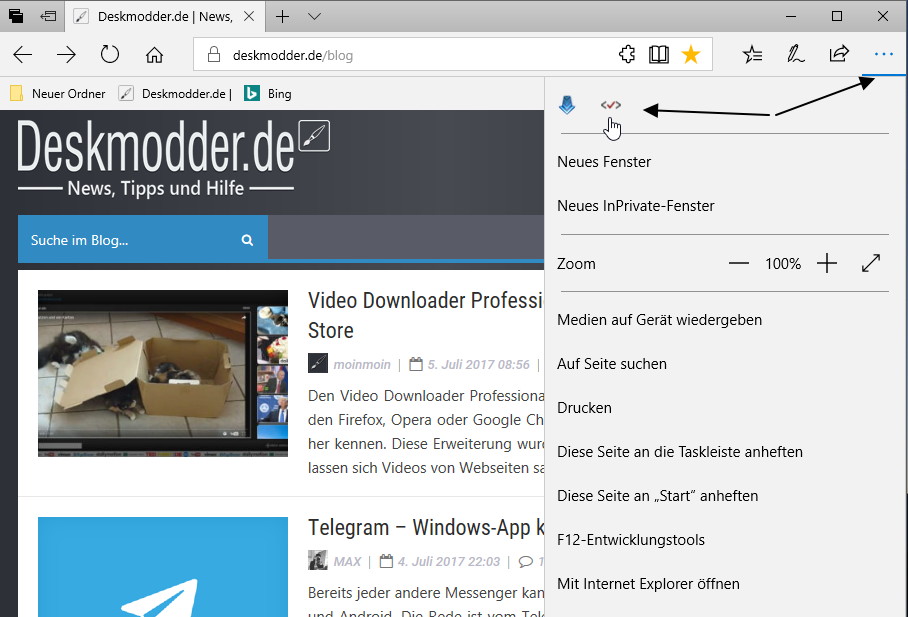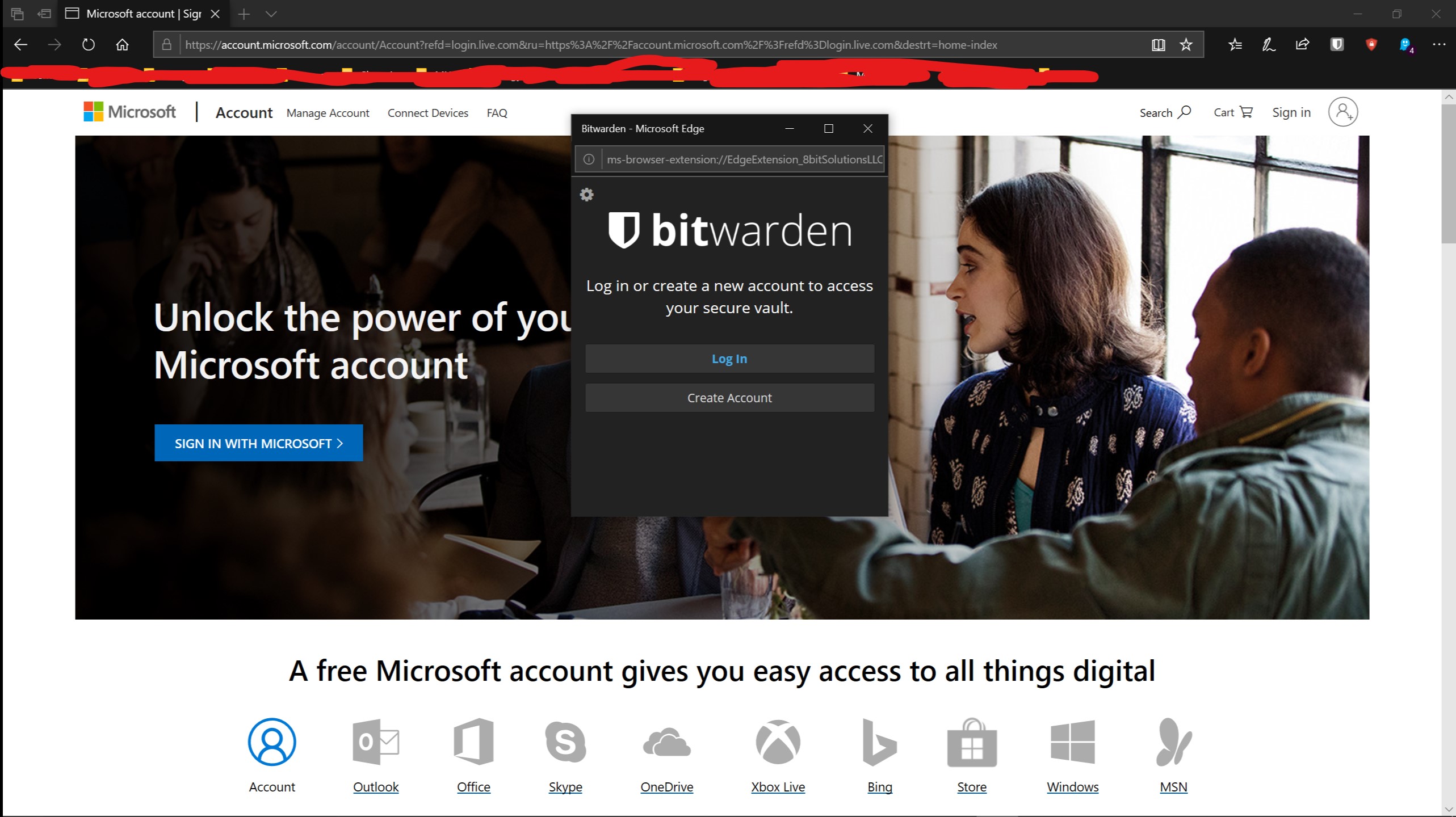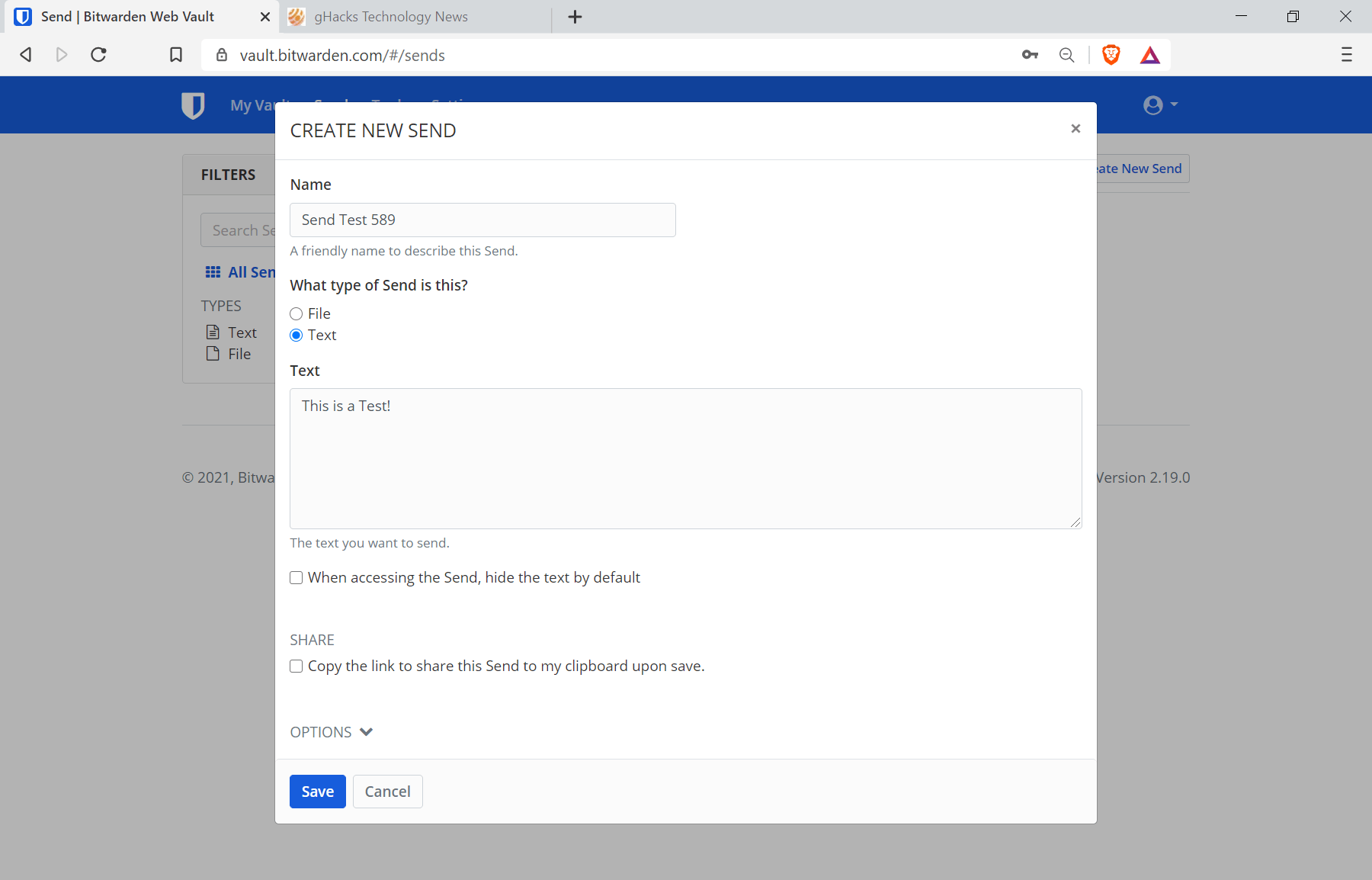Bitwarden Pricing
Bitwarden is free and open-source software, but unlike community-developed alternatives such as KeePass, it is a commercial venture.
The core product is free and will stay free forever, but you can support the developer by paying a very reasonable $10 per year subscription fee for a premium personal account. Premium users enjoy some cool (non-core) additional features, as outlined below.
Unlock the Vault. Start typing name of website with username/password saved in the Vault. After first two characters of your search string, BitWarden extension begins searching. Although Bitwarden is the cheapest password manager, it is slow to add new features causing it to lag behind the competition. The level support offered is also inferior to that of other market-leading password managers such as LastPass, 1Password, and Dashlane. For example, after the most recent Microsoft Edge update, its Bitwarden extension works with hiccups. No matter which one you pick, all of the add-ons will allow you to do essentially the same things that are possible on apps – generate passwords and autofill credentials. The customization options will largely depend on the browser you pick. Bitwarden for Chrome, Firefox, Edge, Opera, and Android is a cross-platform password management solution. Bitwarden is intended to be the easiest and safest way of storing your logins and passwords and keeping them synced between your devices. As we all know, passwords are stolen are the time of breaches.

In addition to a premium personal plan, Bitwarden offers family plans and a couple of enterprise plans aimed at businesses.
In this review, we will focus on personal plans.
What features does Bitwarden offer?
The following features are available to free users:
- End-to-end encryption (e2ee) of passwords
- 100% open source
- Cross-platform apps for all major platforms
- Browser add-ons for all major browsers
- Web browser access from anywhere
- Command-line tools (CLI) to write and execute scripts on your Bitwarden vault
- Can self-host
- Two-factor authentication (2FA)
Paying $10 a year adds:
- 1GB encrypted file storage
- Additional 2FA options
- Priority customer support
What is important to note is that there is no account recovery feature.
How easy is Bitwarden to use?
To start using Bitwarden, just download the app for your platform and sign-up in-app. A password is requested, but this is not verified. You’ll need to think of a strong master password, and can choose a hint to help you remember it.
And that’s it! Just don’t forget your master password!
The desktop clients
The Bitwarden desktop clients are basically identical in Windows, macOS, and Linux. Most versions of Linux are supported thanks to the app being packaged in the AppImage format. It is also available through the Ubuntu Software Center and, of course, you can compile the open-source code yourself.
We find the interface to be smart looking and very easy to use. Four “Types” of data entry are supported: login, card, identity, and secure note.
Each entry Type is formatted in a way suitable to entering data of that kind, and which the app can use to auto-fill passwords, web forms, and card detail forms. using browser add-ons.
An interesting new feature is a button in the password field which checks if the password you input has been exposed. This works much like our very own data breach tool and compares the username and password you enter with a database of known password breaches.
A more secure option than thinking up your own all-too-fallible passwords is to let the Bitwarden app generate secure passwords for you. These passwords can be tailored to conform with any specific requirements a website insists on.
You can also create folders and add items to them. What more do you want? If you need group password management and sharing features then these are provided by Bitwarden’s organization accounts.
Autofill functionality on the desktop is provided by browser add-ons for Firefox and Chrome.
The Mobile Apps
The mobile Android and iOS apps are very similar, and share the same attractive and intuitive design philosophy as their desktop siblings.
Both apps do everything their desktop siblings can including generate secure random passwords. They also both support fingerprint unlocking on devices which have fingerprint sensors.
The Androids app uses the Autofill Framework Service on Android 8+ devices and the Auto-fill Accessibility Service on older Android devices to auto-fill forms in any browser window or app. In addition to this, the browser add-ons work with the mobile versions of Firefox and Chrome.
In iOS 12+ the Bitwarden app integrates with Apple’s new Authentication Services framework to provide instant autofill functionality in most browsers and apps.
Web Vault
In addition to using apps, it is possible to access your passwords via the “Web Vault” from any browser. This is handy, although the possibility of compromised servers pushing malicious JavaScript code directly to your browser window means that using browser-based e2ee cryptography will never be quite as secure as performing the cryptography in a stand-alone client.
Interestingly, the only way to import data is via the Web Vault, which accepts files exported from a huge range of password managers
Command-line interface CLI
In addition to graphical user interfaces (GUIs) for all major platforms, Bitwarden provides a powerful CLI client for Windows, macOS, and Linux.
It doesn’t really do anything the GUI clients don’t, but it is very lightweight and geeks will love it!
Browser add-ons
Browser add-ons are available Chrome, Firefox, Vivaldi, Opera, Brave, and Microsoft Edge. A Firefox link is provided for the Tor Browser, but we do not recommend this as using any browser add-on with Tor Browser makes it more susceptible to browser fingerprinting.
The add-ons look like the Bitwarden apps and provide the same core functionally.
They also make auto-filling logins, forms, and suchlike a breeze.
Bitwarden customer support
An extensive help section provides detailed documentation on most aspects of Bitwarden. If you have any additional questions you can email them in.
Bitwarden is basically a one-man show, so all responses we received were from its developer Kyle Spearrin himself. Responses typically arrived on the same day. Alternatively, the Bitwarden website hosts an active forum on which Kyle is an enthusiast participant.
Privacy and security
Bitwarden is a US company and is therefore subject to FISA, the Patriot Act, and very likely surveillance by the NSA. Which shouldn’t matter because…
Bitwarden uses fully audited open-source end-to-end encryption (e2ee). Which is as good a guarantee that it is secure and private as it’s possible to get. The only way to decrypt your data is by using the correct master password, which is not recoverable should you forget it. So don’t.
Because e2ee is used, it shouldn’t matter that Bitwarden uses Microsoft Azure cloud servers to host accounts, although if this really bugs you then you can self-host on a home or rented server of your choice using the open-source Docker framework.
Audit
In November 2018 a crowdfunded independent security audit by Cure53 found no major issues with the software. Some non-critical issues were discovered, the most important of which were patched immediately. We can only presume that developer Kyle has been working hard this last year to fix any additional issues raised by the audit.
Technical security
Data at rest is protected using an AES-256 cipher. PBKDF2 is used to derive the encryption key from your master password, which is then salted and hashed using HMAC SHA256. These are all respected third-party cryptographic libraries.
Data in transit is protected by regular TLS - which is fine. Even if your data was somehow intercepted in transit (via a MitM attack using fake SSL certificates) it could not be accessed because it is encrypted with AES-256 before leaving your device.
In 2018 a flaw was found in the Chrome add-on’s cryptography. This was largely fixed immediately, although you should never use the ‘never forget’ option of Bitwarden if you do not want your encryption key to exist on disk.
Two-factor authentication (2FA)
Free users can secure their Bitwarden Vaults using a Time-based One-Time Password (TOTP) or email verification for two-factor authentication. Premium users can also use 2FA methods such as Duo, YubiKeys, and other FIDO U2F-compatible USB or NFC devices.
Check out our 'what is 2FA' page if you are new to this.
Final thoughts
Bitwarden is a free and open-source password manager that can go head-to-head with any of its closed- source subscription-based rivals. It is powerful, looks good, is intuitive to use, and syncs seamlessly across all your devices.
In our view, Bitwarden’s only real rival is the similarly open-source KeePass and its various forks. Bitwarden looks prettier than KeePass and is easier to set up and use, but thanks to the huge number of add-ons available to KeePass, it is no-where near as powerful or flexible.
KeePass is also true community-developed software rather than a one-man for-profit product (albeit one which is open-source). Bottom line: Bitwarden is the ideal password manager for the less technically minded.
- Fastest VPN we test
- Servers in 94 countries
- Unblocks Netflix, iPlayer and more
 Get ExpressVPN
Get ExpressVPN Bitwarden Plug In
30-Day Money-Back GuaranteeBitwarden For Edge Extension
In the modern era, the world has seen major progression in the technological sector. New and advanced technologies have made the lives of people easier. Not long ago, people used landlines to communicate with one another, but now, devices such as smartphones have arrived. Such advances have truly revolutionized the lives of humans in ways that go beyond the concept of communication. Such has been the impact of technology on our lives that every aspect of modern life has been merged with it. Whether it involves our finances or our social profiles, all rely heavily on technology.
However, this reliance of ours has made us much more vulnerable to data breaches. The real-life cases of Adobe and eBay clearly indicate what a serious issue cybersecurity is. Cyberattacks have also been on the rise and, to top it off, even more advanced and new kinds of attacks are being developed every day. Although Linux is much more secure than Windows and other operating systems, it is still vulnerable to viruses.
Hence, it is essential to adopt measures that can protect our machines from these security attacks. One excellent solution is to use password managers. Thus, the topic of our discussion in this article will be Bitwarden, an open-source password manager.
What is Bitwarden?
Bitwarden is a free and open-source password manager that is available for Linux and all other major operating systems, like Windows and macOS. Bitwarden also has extensions for all the popular web browsers, such as Chrome, Firefox, Edge, etc. It even has applications available for both Android and IOS mobile devices. Bitwarden offers a very user-friendly and easy-to-use interface, making its graphical interface an excellent choice to have. It works by storing your passwords and other sensitive data inside of an encrypted vault, which itself is protected by a master password. Bitwarden offers both a free and paid account to its users, with the latter having different plans, all of which are low-priced when compared with the market. The free version of Bitwarden, however, is also a very notable choice, as it offers a wide array of features that cannot be found in other password managers.
Installing Bitwarden
Before we move onto the installation process of Bitwarden, it is important to know that you need to sign up for an account to use this program. Simply go to the official website of Bitwarden, click the Create your Free Account option, and input your details to create an account.
Bitwarden Edge Chrome
Once you are done creating your account, it is also good practice to install an extension of Bitwarden inside your web browser for automatic fill-in of your login details. You can install this either by going to the official extension and add-ons page of your browser or by clicking the options available on Bitwarden’s official webpage.
There are two primary methods of installing Bitwarden on your machine. We will look at them in the following section.
Installing Bitwarden Using AppImage
To install Bitwarden using its AppImage, once again, open Bitwarden’s official website. Then, select the Download option from the top of the page and click on the Linux segment found under the Desktop heading.
Bitwarden Extension Firefox
This will download an AppImage onto your Linux machine. To start using Bitwarden, first, you must give it executable permission. This can be done by right-clicking on the icon and selecting the Properties option.
Next, open the Permissions tab and click the square box next to the line Allowexecutingfileas program to make your AppImage executable.
Now, Bitwarden can be opened by double-clicking the AppImage file.
Installing Bitwarden Using Snap
Another method of installing Bitwarden on your computer is by using Snaps. Snaps are applications that include all the dependencies bundled together inside a software package. This removes the hassle of separately installing dependencies along with your application. To install Bitwarden using Snaps, simply run the following command in the terminal:
Using Bitwarden
After downloading and opening Bitwarden, a login menu will appear in front of your screen. Enter your login details to start using Bitwarden. Note that if you were not able to make your Bitwarden account before, you can do so from here.
After logging in, Bitwarden will take you to your Vault, where all your passwords and sensitive data will be saved.

You can manually add items inside your Vault by clicking on the plus icon, as seen in the image above. This will open a window into which you can input any details about your account that you want to add.
You can also change the type of item that you want to add by selecting options from the drop-down menu, as indicated in the image below.
It is important to note that the item details that you input in this window will change depending on what type you choose to add.
When adding accounts to your Vault, you can also use the Password Generator option of Bitwarden, which will automatically generate a secure password for you.
To keep track of all these passwords, you can use the Password History option in the View tab, where all generated passwords will be stored.
You can also sync your account with your web browser by going to the File option and selecting the SyncVault option.
Bitwarden even allows you to export your Vault by using the Export Vault option, as seen in the image above. The exported files will either be in the json or csv format.

So, Why Use Bitwarden?
Borderlands 2: gunzerker supremacy pack download for mac. There is no doubt that the Internet has revolutionized the world, as it has now become an integral part of our daily lives. As we are now highly dependent on technology for our day-to-day work, this dependency has paved the way for cybersecurity issues to arise and has led to severe cases of identity theft and data leakage. Bitwarden is an excellent choice to protect your machine from such threats, as it offers a way for users to protect their data and keep their systems secure.
